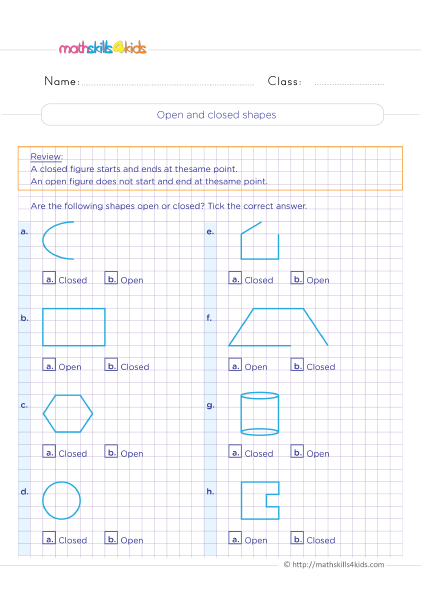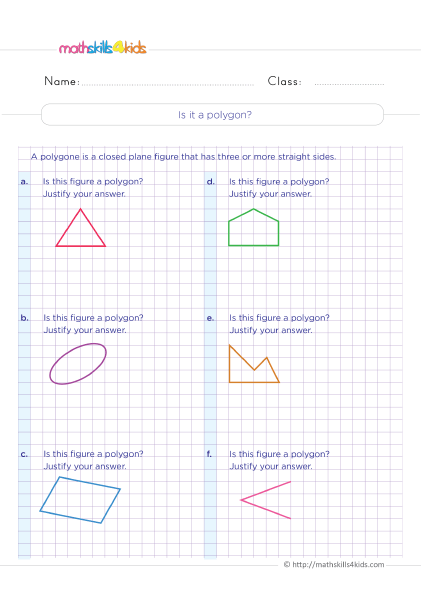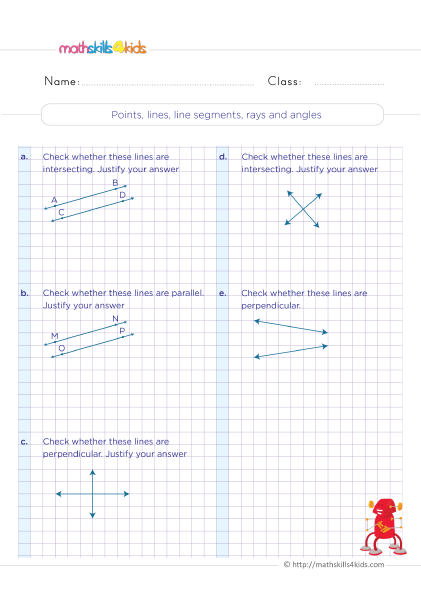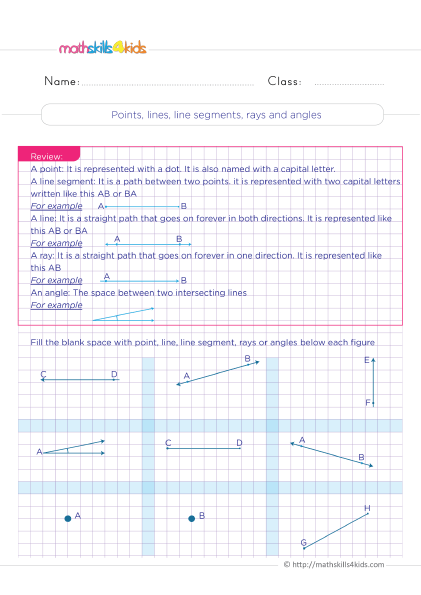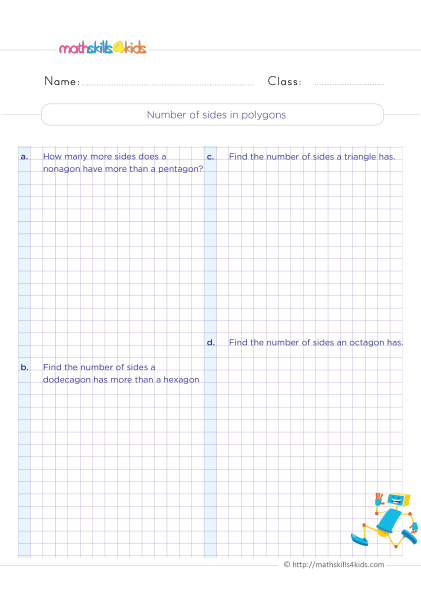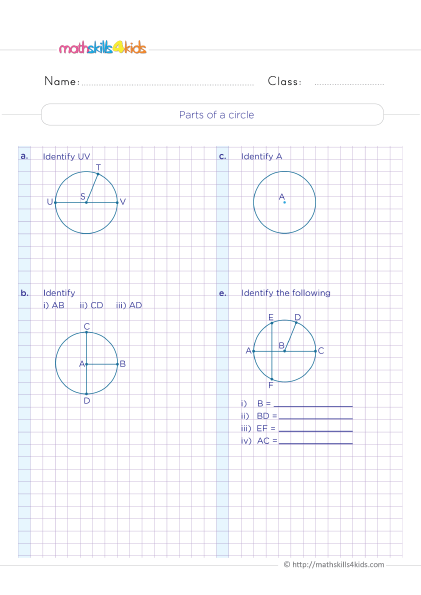Grade 4 Math: Exploring 2D Shapes with Printable Worksheets
-
Looking for engaging and educational worksheets to help your fourth-grade students learn about 2D shapes? Look no further! These printable worksheets are designed to reinforce Grade 4 math skills and introduce students to the world of 2D shapes. By exploring 2D Shapes with printable worksheets, your 4th graders will become more active in recognizing and drawing shapes with their specified attributes like number of sides, angles, etc.
Whether you're a teacher looking for classroom resources or a parent wanting to support your child's learning at home, these worksheets are a great tool to have on hand. So, let’s get started!
Why are 2D shapes important for math learning?
2D shapes are important for math learning because they are the building blocks of geometry. Geometry is the branch of math that studies shapes, sizes, positions, and properties of space. Geometry helps us understand the world and solve problems involving shapes and measurements. For example, geometry can help us design buildings, create art, map the earth, and more.
-
BROWSE THE WEBSITE
-
DOWNLOAD FREE WORKSHEETS
-
-
4th GRADE MATH TOPICS
- Number sense
- Addition
- Subtraction
- Multiplication
- Division
- Mixed operations
- Variable expressions
- Functions
- Coordinate plane
- Data and graphs
- Logical reasoning
- Patterns and sequences
- Money math
- Units measurement
- Telling time
- Equivalent fractions
- Compare & order fractions
- Add & subtract fractions with like denominators
- Add & subtract fractions with unlike denominators
- Multiply fractions
- Decimals
- Add and subtract decimals
- Probabilities and statistics
- 2D shapes
- Triangles and quadrilaterals
- Symmetry
- Angles
- 3D shapes
- Geometric measurement
-
Buying is supporting us!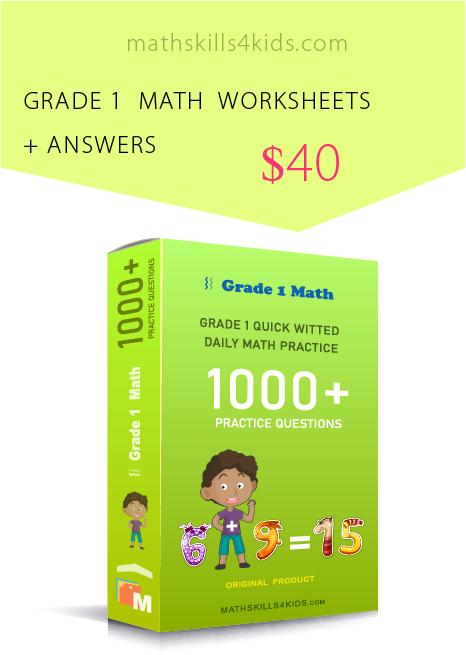
Buy Now...
-
-
A brief overview of the definition, properties, and examples of common 2D shapes such as squares, rectangles, circles, triangles, and more
To understand and explore our printable Grade 4 math 2d shapes worksheets interestingly, it will be important to have a brief overview of the definition, properties, and examples of common 2D shapes such as squares, rectangles, circles, triangles, and more.
-
What are 2D shapes?
2D shapes are shapes that have two dimensions: length and width. They are also called flat shapes because they lie on a flat surface. They have no thickness or depth. Some examples of 2D shapes are squares, rectangles, circles, triangles, pentagons, hexagons, octagons, and more.
-
Common properties of 2D shapes
Each 2D shape has properties that describe its features and characteristics. Some common properties of 2D shapes are:
- Sides: The straight or curved edges of a shape.
- Angles: The corners where two sides meet. Angles can be acute (less than 90 degrees), right (90 degrees), or obtuse (more than 90 degrees).
- Vertices: The points where two or more sides meet. Also called corners.
- Symmetry: The ability of a shape to be divided into two or more equal parts that match exactly when folded or flipped over a line or a point.
-
How can printable worksheets help 4th graders practice and master 2D shapes?
Printable worksheets are a great way to practice and master 2D shapes because they provide fun and engaging activities reinforcing 4th Grade math learning. We can use printable worksheets to review what has been taught in class, to prepare for tests, or to challenge students with new problems.
These printable worksheets also allow students to work at their own pace and level and get instant feedback on their answers.
-
How to identify 2D shapes? Some tips and tricks on how to recognize and name 2D shapes by looking at their sides, angles, corners, and symmetry
One way to identify 2D shapes is by looking at their sides. You can count how many sides a shape has and what shape they are. For example;
- A square has four equal straight sides,
- A rectangle has four straight sides with two pairs of equal length,
- A circle has one curved side,
- A triangle has three straight sides, and so on.
Another way to identify 2D shapes is by looking at their angles. You can measure the angles of a shape using a protractor or estimate them by comparing them to right angles. For example,
- A square has four right angles,
- A rectangle has four right angles,
- A circle has no angles,
- A triangle has three angles that add up to 180 degrees, and so on.
A third way to identify 2D shapes is by looking at their vertices. You can count how many vertices a shape has and where they are located. For example,
- A square has four vertices at its corners,
- A rectangle has four vertices at its corners,
- A circle has no vertices,
- A triangle has three vertices at its corners, and so on.
A fourth way to identify 2D shapes is by looking at their symmetry. You can check if a shape has a line or point symmetry by folding or flipping it over a line or point. For example,
- A square has four lines of symmetry and one point of symmetry,
- A rectangle has two lines of symmetry and one point of symmetry,
- A circle has infinite lines of symmetry and one point of symmetry,
- A triangle has one or more lines of symmetry depending on its type (equilateral, isosceles, or scalene), and so on.
-
How to measure 2D shapes? A review of the concepts and formulas for finding the perimeter, area, and angles of different 2D shapes
- One way to measure 2D shapes is by finding their perimeter. The perimeter is the distance around the edge of a shape. To find the perimeter of a shape, add up the lengths of all its sides. For example, the perimeter of a square is 4 times the length of one side, the perimeter of a rectangle is 2 times the length plus 2 times the width, the perimeter of a circle is 2 times pi times the radius, and so on.
- Another way to measure 2D shapes is by finding their area. The area is the amount of space inside a shape. To find the area of a shape, use different formulas depending on the type of shape. For example, the area of a square is the length of one side squared, the area of a rectangle is the length times the width, the area of a circle is pi times the radius squared, the area of a triangle is half the base times the height, and so on.
- A third way to measure 2D shapes is by finding their angles. The angles of a shape are the measures of the turns between its sides. To find the angles of a shape, use a protractor or some rules and formulas depending on the type of shape. For example, the angles of a square are all 90 degrees, the angles of a rectangle are all 90 degrees, the angles of a circle are all 360 degrees, the angles of a triangle add up to 180 degrees, and so on.
-
Exploring Grade 4 two-dimensional shapes with printable worksheets: Samples of skills available in Mathskills4kids.com
Identifying 2D Shapes
Students will practice identifying and naming different 2D shapes, such as squares, rectangles, triangles, and circles.
This worksheet set is perfect for helping students develop their shape-recognition skills. Each worksheet features a variety of 2D shapes, and students are tasked with identifying and naming each shape. They will encounter common shapes such as squares, rectangles, triangles, and circles and more complex shapes like pentagons and hexagons.
By completing these worksheets, students will become more familiar with the characteristics of each shape and improve their ability to identify them in real-world objects.
Properties of 2D Shapes
Students will learn about the properties of different 2D shapes, including the number of sides, angles, and symmetry.
Understanding the properties of 2D shapes is an important skill for fourth-grade students to develop. In this worksheet set, students will learn about the number of sides, angles, and symmetry of various shapes. They can identify shapes based on these properties and understand how they relate to real-world objects.
By completing these worksheets, students will strengthen their knowledge of 2D shapes and improve their ability to analyze and classify them.
Sorting 2D shapes
Students will sort various 2D shapes based on their attributes, such as the number of sides or angles.
This activity will help students practice identifying and categorizing different 2D shapes. They will be given a set of shapes and asked to sort them into groups based on specific attributes, such as the number of sides or angles. This will help them develop their critical thinking and problem-solving skills and reinforce their understanding of shape properties.
By engaging in this hands-on activity, students will gain a deeper understanding of 2D shapes and improve their ability to analyze and classify them.
Drawing 2D Shapes
Students will practice drawing different 2D shapes using a ruler and protractor to ensure accuracy.
In this activity, students can practice their drawing skills by creating various 2D shapes. They will use a ruler to ensure straight lines and a protractor to measure and create accurate angles. This activity will help students improve their drawing abilities and reinforce their understanding of shape properties and measurements.
By engaging in this hands-on activity, students will develop their spatial reasoning skills and gain a deeper understanding of 2D shapes.
Problem-Solving with 2D Shapes
Students will solve word problems that involve 2D shapes, such as finding the perimeter or area of a shape.
This activity is designed to help students apply their knowledge of 2D shapes to real-world problem-solving situations. Students will develop their critical thinking and mathematical reasoning skills by solving word problems that involve finding the perimeter or area of a shape. They will also better understand how 2D shapes are used in practical situations.
This activity can be done individually or in small groups and can be fun and engaging for students to practice their math skills.
-
How to compare and classify 2D shapes? A fun activity on sorting and grouping 2D shapes based on their attributes and characteristics
One way to compare and classify 2D shapes is by sorting and grouping them based on their attributes and characteristics. You can use different criteria to sort and group shapes, such as:
- Number of sides: You can sort and group shapes by how many sides they have. For example, you can make groups of shapes with three sides (triangles), four sides (quadrilaterals), five sides (pentagons), six sides (hexagons), etc.
- Type of sides: You can sort and group shapes by what type of sides they have. For example, you can make groups of shapes with straight sides (polygons), curved sides (circles), or both (semi-circles).
- Length of sides: You can sort and group shapes by their sides' length. For example, you can make groups of shapes with equal sides (regular polygons), unequal sides (irregular polygons), or both (trapezoids).
- Type of angles: You can sort and group shapes by what type of angles they have. For example, you can make groups of shapes with right angles (rectangles), acute angles (acute triangles), obtuse angles (obtuse triangles), or both (scalene triangles).
- Number of vertices: You can sort and group shapes by their number of vertices. For example, you can make groups of shapes with three vertices (triangles), four vertices (quadrilaterals), five vertices (pentagons), six vertices (hexagons), etc.
- Type of symmetry: You can sort and group shapes by their symmetry type. For example, you can make groups of shapes with line symmetry (squares), point symmetry (circles), both (rectangles), or none (scalene triangles).
Bonus: Extra 2D shapes activities to reinforce 4th graders' practice
If you are looking for extra engaging activities to help your students practice their 2D shapes skills, here is a compiled list of awesome web pages offering free and interactive 2D shapes games, puzzles, quizzes, and more. These activities are perfect for reinforcing what your students have learned in class or providing extra practice at home.
- [Math Playground] (https://www.mathplayground.com/shape_patterns.html): This web page has a cool game where students have to complete a pattern of 2D shapes by dragging and dropping the correct shape into an empty space. The game gets harder as the students progress, and they can choose from different difficulty levels. This game is great for developing spatial reasoning, logic skills, and 2D shapes recognition.
- [SplashLearn] (https://www.splashlearn.com/math-games/2d-shapes): This web page has various games covering different aspects of 2D shapes, such as identifying, naming, sorting, comparing, and classifying them. These colorful and interactive games provide feedback and hints to help the students. The games also adapt to the student's skill level, so they can challenge themselves and learn at their own pace.
- [Education.Com] (https://www.education.com/games/geometry/): This web page has games teaching students about geometry concepts, including 2D shapes. The games are fun and engaging, covering topics such as angles, symmetry, area, perimeter, and more. The games also have different modes and options so that students can customize their learning experience.
-
Thank you for sharing the links of MathSkills4Kids.com with your loved ones. Your choice is greatly appreciated.
Conclusion
We hope you find this article useful and enjoyable for your 4th graders and learn something new about 2D shapes. This article introduces us to Mathskills4kids.com, and more links, which are great for reinforcing 4th Grade 2D shapes knowledge and skills and making learning fun.
In this article, we have explored 2D shapes with printable worksheets that you can download and print for free. We have learned what 2D shapes are, how to identify and measure them, and how to compare and classify them.
Now it's your turn to practice and master Grade 4 Math 2D Shapes with Printable Worksheets for free. You will find different types of activities that will help you review and reinforce your learning.
You will also have fun solving puzzles, coloring pictures, drawing shapes, and more. Click the link below to download and print our Mathskills4kids Grade 4 math 2D shapes worksheets.
Have fun exploring 2D Shapes with Printable Worksheets!
